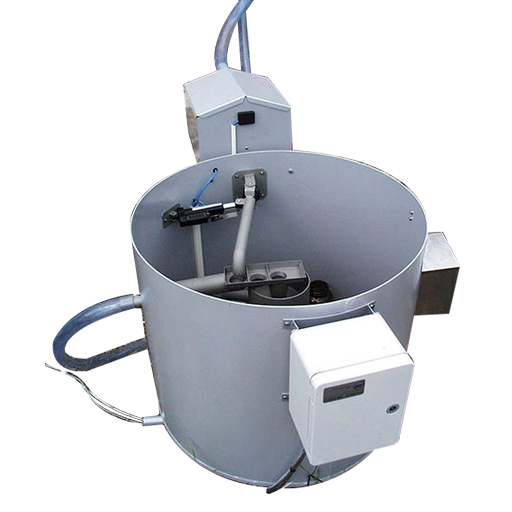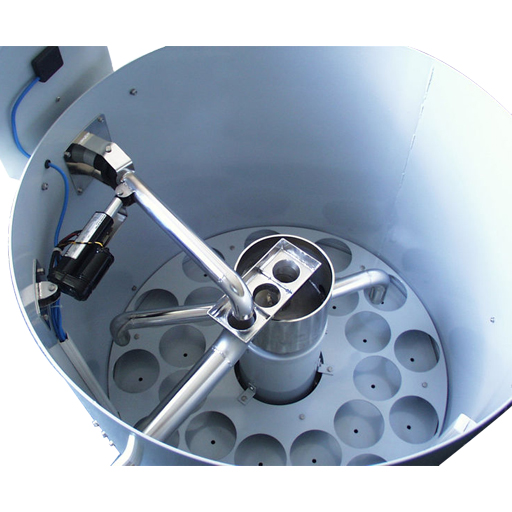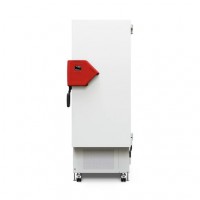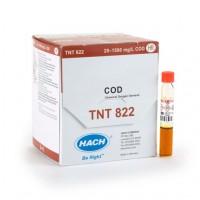Run off measurement instrument
- UGT - 201100
- Fully automatic sampling
- Sampling adapted to the runoff intensity
- Water distribution only via switches
The measuring system is used for the detection of surface run off and the erosion materials contained therein.
The surface run off water is collected in a collection channel and quantified by a tipping counter before it is filled into sample vessels or tilted. The start and the intensity of the runoff event are registered by an internal data logger.
The subsequently filling of the samples of the surface runoff in up to 24 brown glass flasks is carried out fully automatically and only via water switches. There are no bottlenecks that could add up, cause a backflow or slow down the flow rate. The erosion material can thus be unhindered transported in the flowing water. Coarse impurities are already held back by a stainless steel sieve before the tipping counter. In order to always be able to record the different runoff events, the sampling frequency is adjusted by a microcomputer. At low flow rates, the entire surface runoff detected by the collecting channel is filled as a sample in order to obtain the largest possible sample quantity. In the case of a strong discharge event, sample water is filled only in adapted time intervals. The remaining water is tilted again after the quantity has been recorded. Thus, a too fast filling of all sample bottles is pre-determined and a distribution of the samples over the entire runoff event is ensured.
With the help of upstream sample dividers, test plots as well as small-scale areas up to a size of 3 ha can be sampled. In combination with meteorological and soil hydrological measuring stations a comprehensive picture of the discharge and erosion processes can be obtained.
The entire system is made of rust free stainless steel which is inert to the samples. It is installed underneath in order to generate the flow solely due to the difference in height and not to rely on pumps. Thus, free flow is generated and the energy consumption is minimized.
| Number of samples | 24 |
| Sample volume | 1000 ml |
| Energy supply | Replaceable storage battery 12 V/10 Ah |









Do you have a question?
min 10 ch